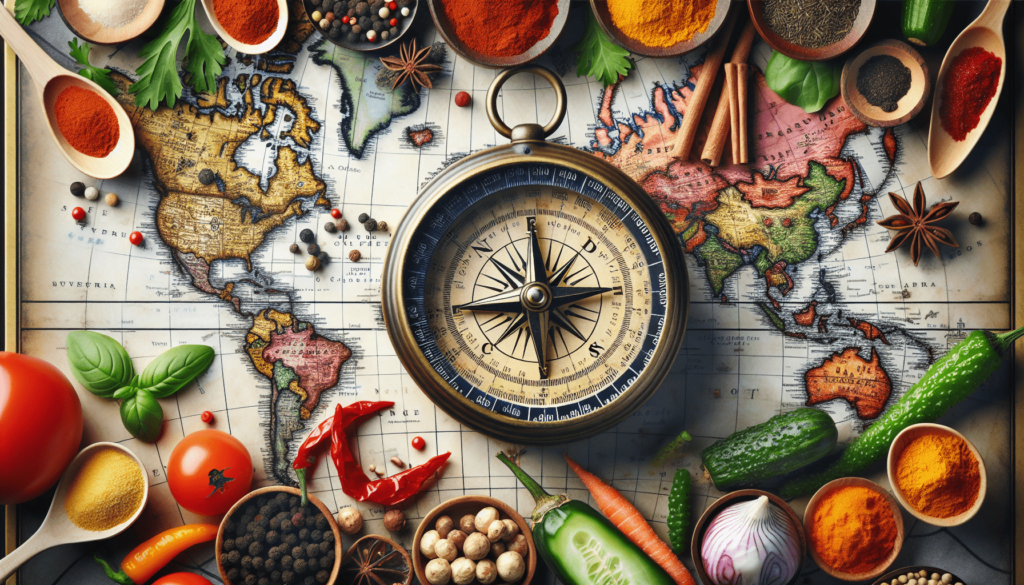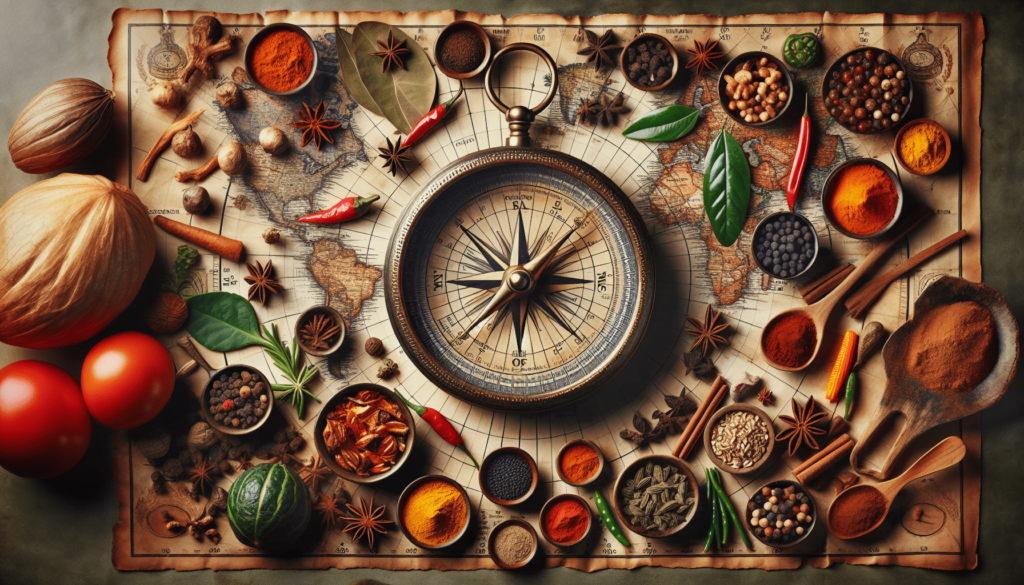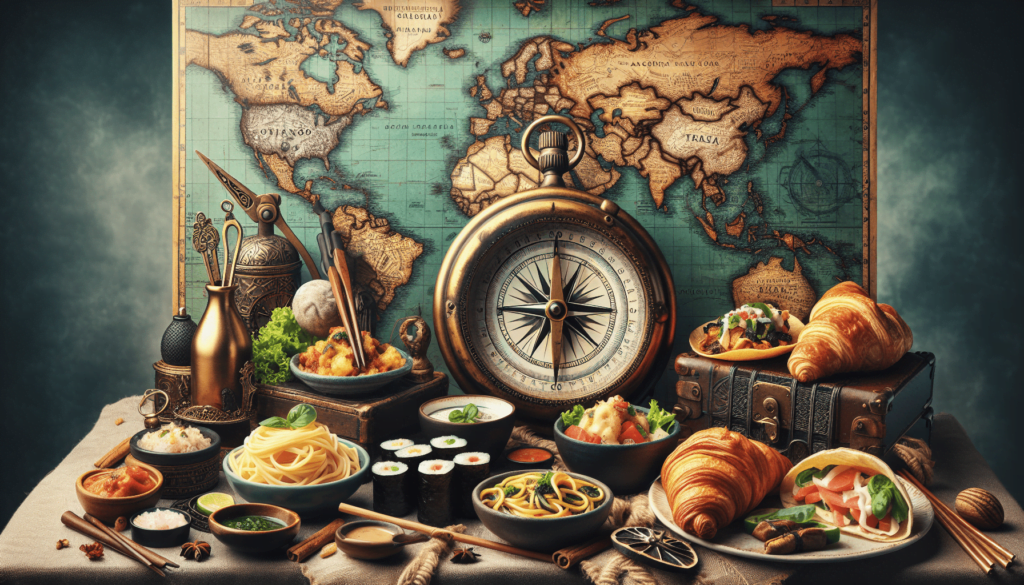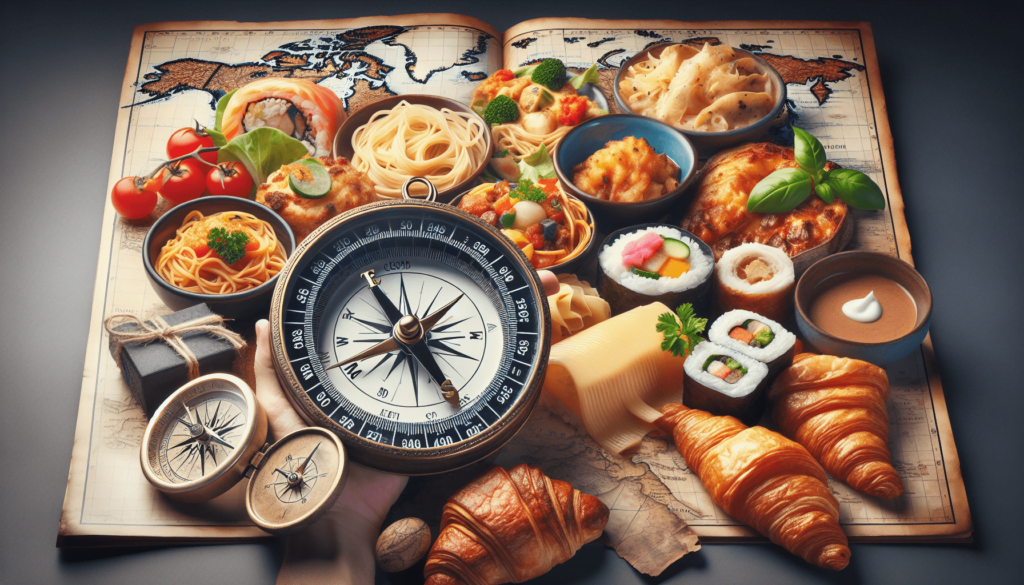Embarking on a culinary journey abroad opens up a world of flavors and traditions that can turn any meal into an unforgettable experience. In “Navigating the Global Gastronomy: A Culinary Compass for Foodies Traveling Abroad,” you’ll discover an in-depth guide that not only helps you find the best local dishes but also delves into the rich histories and current trends shaping global cuisines. With this compass in hand, you’ll be well-equipped to savor authentic tastes, understand diverse cooking techniques, and appreciate the cultural significance behind each bite, ensuring your travel adventures are as mouth-watering as they are enlightening. Have you ever wondered how to make the most of your culinary adventures while traveling abroad?
Table of Contents
Navigating the Global Gastronomy: A Culinary Compass for Foodies Traveling Abroad
Overview
Embarking on a journey through global cuisine is a thrilling experience for any foodie. The world is brimming with flavors, aromas, and traditions that transcend mere sustenance, offering a deep dive into the soul of a culture. In today’s interconnected world, where our plates are no longer confined by geographical boundaries, navigating the myriad of global gastronomy can be both an exciting and daunting task. This guide aims to equip you with the knowledge and confidence to explore international culinary landscapes with ease and enthusiasm.
Thesis Statement
Navigating the global gastronomy is more than just satisfying your taste buds; it’s about merging cultural exploration with culinary delight. Understanding the history, trends, and key concepts of different cuisines around the world can serve as a culinary compass, guiding foodies to make the most of their gastronomic journeys abroad.

Historical Context
The exploration of world cuisines dates back centuries, fueled by trade routes, colonization, and the migration of people. For instance, the Silk Road, an ancient trade network, was pivotal in introducing Asian spices to Europe and vice versa. Similarly, the Age of Exploration in the 15th and 16th centuries led to the exchange of staple crops like potatoes, tomatoes, and maize between the Old World and the New World. Understanding this historical backdrop highlights the rich tapestry of our modern food landscape, which is an amalgamation of diverse influences.
The Spice Trade
One cannot discuss the history of global gastronomy without mentioning the spice trade. Spices such as cinnamon, cardamom, and black pepper were highly coveted and instrumental in shaping culinary traditions across continents. These exotic flavors not only livened up monotonous diets but also played a role in social and economic interactions.
Colonial Influence
Colonialism also had a profound impact on global cuisine. The Portuguese introduced chili peppers to Asia, the British popularized tea in India, and European settlers brought their bread and dairy products to the Americas, leading to the fusion cuisines we enjoy today. This blending of food cultures demonstrates how political and social shifts can leave a lasting mark on culinary practices.
Current Trends
Today’s culinary scene is a melting pot of innovation and tradition. From farm-to-table dining to the rise of plant-based diets, the trends shaping contemporary gastronomy are a testament to our evolving palate and increasing awareness of sustainability and health.
Farm-to-Table Movement
This trend emphasizes locally sourced and seasonal ingredients, aiming to reduce the carbon footprint and support regional farmers. It’s a nod to tradition, where meals were prepared with fresh produce from local farms, and a push towards a more sustainable future.
Plant-Based and Vegan Options
Health concerns and environmental awareness have led to a surge in plant-based and vegan dining options. These diets not only help in reducing animal cruelty but also aim to lower the consumption of resources required for meat production.
Fusion Cuisine
Fusion cuisine, blending elements from different culinary traditions, is gaining popularity. Whether it’s a sushi taco or Korean BBQ pizza, these innovative dishes offer a burst of diverse flavors, reflecting our increasingly globalized world.

Key Concepts and Definitions
Before diving deeper into your culinary journey, it’s essential to grasp some fundamental concepts. This will not only enhance your experience but also help you appreciate the intricate details that each cuisine has to offer.
Umami
Often referred to as the fifth taste, umami is a savory flavor found in foods such as soy sauce, mushrooms, and aged cheese. Originating from Japanese cuisine, this taste adds a depth of flavor that is both complex and satisfying.
Molecular Gastronomy
This is a modern style of cooking that utilizes scientific principles to create innovative dishes. Think of foams, gels, and spheres that burst with surprising flavors. Chefs like Ferran Adrià and Heston Blumenthal have popularized this avant-garde approach.
Slow Food Movement
Originating in Italy, the Slow Food Movement emphasizes the importance of food quality, regional traditions, and mindful eating. It’s a counter to fast food culture, encouraging people to savor their meals and understand the story behind their ingredients.
Detailed Exploration
Research Before You Travel
Before embarking on your culinary journey, invest some time in research. Understanding the local food scene, popular dishes, and dining etiquette will help you navigate the local gastronomy with confidence.
- Local Cuisine: Explore what the region is famous for. For instance, visiting Italy calls for diving into pasta and pizza, while a trip to Japan isn’t complete without trying sushi and ramen.
- Dining Customs: Each culture has its dining etiquette. In Japan, it’s polite to slurp your noodles, but in many European countries, it’s considered rude.
- Food Markets and Festivals: Local markets and food festivals are an excellent way to experience a wide variety of regional specialties.
Navigating Street Food
Street food offers an authentic and immersive culinary experience. Often more affordable and accessible than fine dining, street food is the heartbeat of local cuisine.
- Safety Tips: While street food is generally safe, it’s wise to select vendors with high turnover rates, ensuring fresh preparation. Avoid raw foods unless you’re sure of their source.
- Must-Try Delicacies: Depending on your destination, seek out iconic street foods like Thailand’s Pad Thai, Mexico’s Tacos, or India’s Pani Puri.
- Connecting with Vendors: Engaging with street food vendors can enrich your experience. Many are passionate about their craft and can offer fascinating insights into their cooking techniques and ingredients.
Fine Dining and Michelin Stars
For a more formal dining experience, fine dining and Michelin-starred restaurants provide an opportunity to indulge in culinary masterpieces.
- Reservations: Popular establishments often require reservations months in advance. Plan ahead to secure your spot.
- Dress Code and Etiquette: High-end restaurants may have specific dress codes and dining etiquettes. Familiarize yourself with these to ensure a pleasant experience.
- Tasting Menus: Many Michelin-starred restaurants offer tasting menus that allow you to sample a variety of dishes. This can be a great way to experience the chef’s creativity and expertise.
Exploring Beverages
From wine to sake, each region boasts a unique array of beverages that complement their culinary offerings.
- Local Wines and Spirits: Discovering the local beverages is just as important as the food. Countries like France and Italy are renowned for their wines, while Japan offers an exquisite range of sake.
- Pairing Drinks with Food: Understanding how to pair drinks with your meals can significantly enhance your dining experience. For instance, a robust red wine pairs excellently with red meat, while a crisp white wine complements seafood.

Example 1: Case Study of Japanese Cuisine
Japanese cuisine is a shining example of how historical influences and modern trends can coexist harmoniously.
Historical Influences
Japanese cuisine has been shaped by Shinto and Buddhist traditions, emphasizing simplicity, natural flavors, and respect for ingredients. The introduction of rice cultivation, which dates back to 2,000 years ago, became the cornerstone of Japanese meals. The arrival of Portuguese missionaries in the 16th century introduced tempura, now a beloved dish.
Modern Trends
Today, Japanese cuisine incorporates global influences while preserving its unique identity. The concept of “Washoku” (traditional Japanese food) was granted UNESCO Intangible Cultural Heritage status, recognizing its cultural significance. The rise of sushi and ramen shops worldwide showcases the global appeal of Japanese flavors.
Dining Experience
When traveling to Japan, indulge in a traditional kaiseki meal — a multi-course dining experience offering a variety of meticulously prepared dishes. Visit local izakayas (Japanese pubs) to enjoy small plates of food paired with sake. Don’t miss the chance to experience an authentic sushi bar, where the chef prepares each piece right in front of you.
Example 2: Case Study of Italian Cuisine
Italian cuisine is another culinary realm where history, culture, and modernity blend seamlessly.
Historical Influences
Italy’s diverse regions each have their own unique culinary traditions. The influence of Roman, Etruscan, and Greek civilizations can be seen in different regional cuisines. Tomatoes, which are now synonymous with Italian cooking, were introduced from the New World in the 16th century.
Modern Trends
Italian cuisine remains rooted in tradition while embracing contemporary trends. The Slow Food Movement originated in Italy, emphasizing regional ingredients and traditional recipes. Modern Italian chefs are experimenting with molecular gastronomy, creating a refreshing twist on classic dishes.
Dining Experience
When in Italy, your culinary journey should include regional specialties like Neapolitan pizza, Tuscan ribollita, and Sicilian cannoli. Visit local trattorias for hearty, traditional meals and discover the charm of Italian hospitality. Wine aficionados should explore the vineyards of Tuscany and Piedmont to enjoy some of the world’s finest wines.

Comparison of Different Perspectives
Traditional vs. Modern Cuisine
Traditional cuisine focuses on age-old recipes and techniques passed down through generations. It’s about preserving heritage and authenticity. Modern cuisine, on the other hand, emphasizes innovation and fusion, blending diverse ingredients and methods to create something novel.
- Flavors: Traditional dishes often have deep, rich flavors that evoke a sense of nostalgia. Modern cuisine might surprise you with unexpected flavor combinations.
- Presentation: While traditional meals are usually served in a straightforward manner, modern cuisine often involves artistic plating and avant-garde presentations.
Potential Pitfalls and Cautions
While exploring new cuisines is exhilarating, it’s essential to be mindful of certain pitfalls. Food allergies and dietary restrictions can pose challenges. Make sure to clearly communicate your needs to restaurant staff. Language barriers might complicate your culinary adventures, but learning a few basic phrases can make a significant difference.
Impact Assessment
The interplay between traditional and modern cuisines has profound implications. Preserving culinary heritage fosters a sense of identity and continuity, while embracing innovation ensures that food cultures remain dynamic and relevant. The resurgence of regional cuisines can boost local economies and tourism, promoting cultural exchange and understanding.
Future Directions and Implications
Predictions
As global awareness of sustainability and health continues to grow, future culinary trends will likely emphasize plant-based diets, zero-waste cooking, and the use of sustainable ingredients. Technology will play a pivotal role in shaping future dining experiences, with advances in food preservation, alternative proteins, and even virtual reality dining.
Implications
The rise of these trends will not only influence chefs and restaurants but also extend to food production and consumption patterns. There will be increased emphasis on ethical sourcing and reducing food waste. Culinary tourism will continue to thrive, encouraging travelers to seek authentic and immersive gastronomic experiences.
Conclusion
Recap
Navigating the global gastronomy involves more than just tasting different foods; it’s about immersing yourself in the cultural, historical, and social contexts that shape each cuisine. Understanding historical influences, current trends, and key concepts can serve as a culinary compass, guiding you through a world of flavors.
Final Thought
So, the next time you embark on a culinary adventure abroad, remember that each bite is a story waiting to be told. Are you ready to dig in and uncover these stories?
Engagement
We’d love to hear about your own culinary adventures! Share your experiences or ask questions in the comments below. If you enjoyed this guide, consider sharing it with fellow foodies and exploring more of our travel and food resources.
Credible Sources
- Salt: A World History by Mark Kurlansky
- National Geographic – The Silk Road: Connecting the Ancient World Through Trade
- UNESCO – Washoku, traditional dietary cultures of the Japanese
- The Food of Italy by Waverley Root
- Slow Food International – The Slow Food Movement: Principles and Practices
With this detailed guide, you’re well-equipped to navigate the global gastronomy with confidence and curiosity. Bon appétit and safe travels!
Related site – Garima Arora Makes Culinary History: Secures Two MICHELIN Stars while Navigating Motherhood at Gaa
Taste Travels: A Delicious Journey Across International Cuisine
